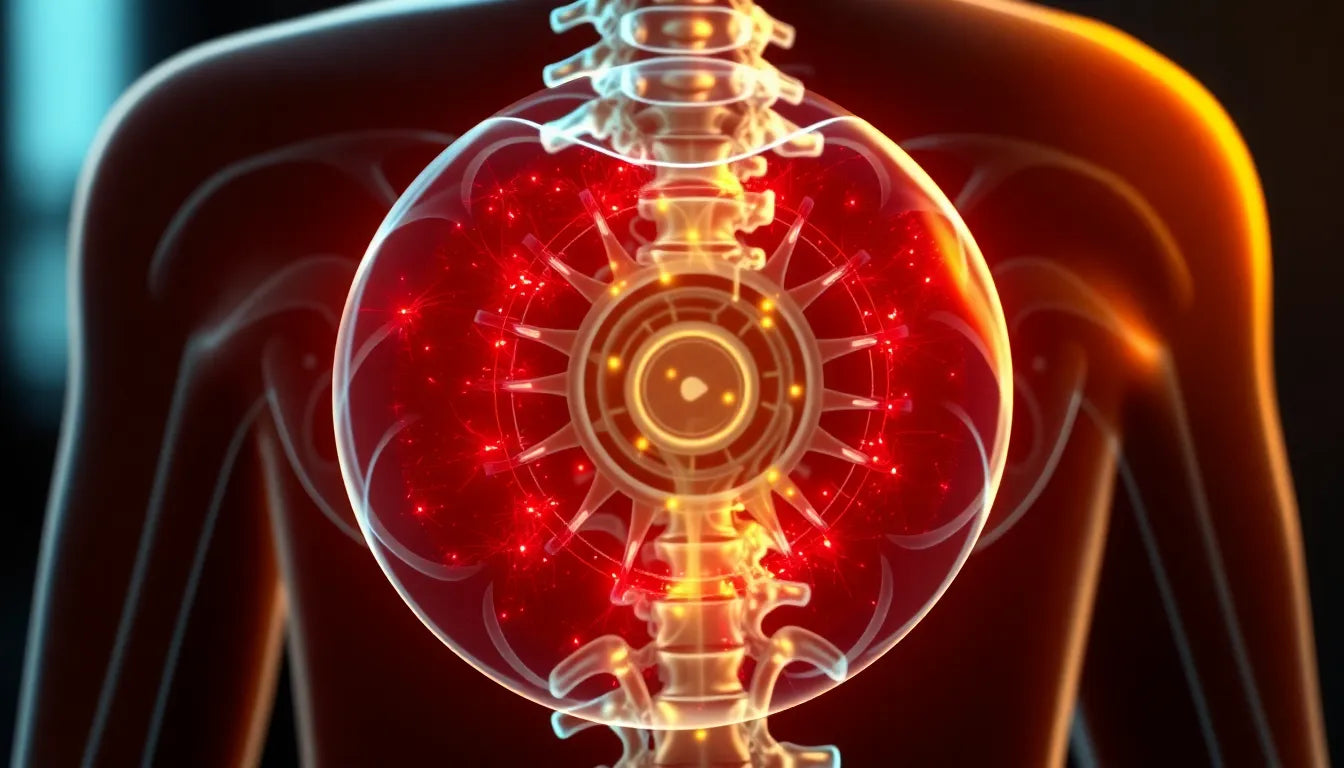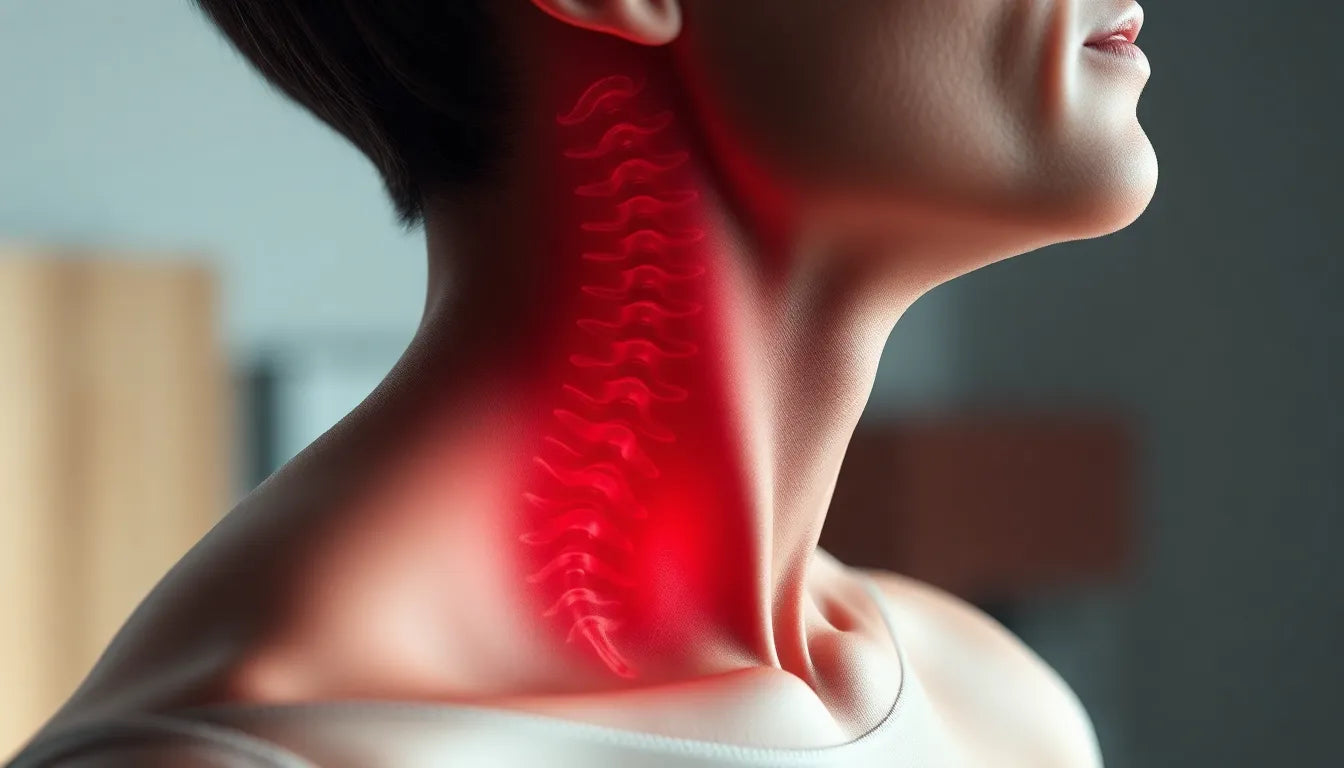A herniated disc can be a daunting diagnosis, often accompanied by pain, discomfort, and limitations in daily activities. This condition occurs when the soft center of a spinal disc pushes through a crack in the tougher exterior casing, frequently leading to nerve irritation. The resulting symptoms can range from mild discomfort to debilitating pain, affecting one's ability to move freely and perform routine tasks. However, there's a silver lining—strength training, when done correctly, can play a pivotal role in managing and even alleviating the challenges posed by a herniated disc.
understanding herniated discs and strength training
Strength training, often associated with building muscle and improving physical fitness, can be a highly effective strategy for those dealing with a herniated disc. The key lies in approaching this form of exercise with caution and precision. By focusing on exercises that enhance core stability and support the spine, individuals can not only manage pain but also improve their overall condition. This is where professional guidance becomes invaluable. A tailored strength training regimen, designed under the supervision of healthcare or fitness professionals, ensures that exercises are safe and beneficial, minimizing the risk of exacerbating the condition.
the importance of safe exercise practices
Exercise plays a crucial role in rehabilitation and pain management for those with a herniated disc. It's not just about building strength; it's about doing so in a way that supports recovery and prevents further injury. With the right approach, individuals can engage in strength training that not only avoids harm but actively contributes to healing. This involves selecting exercises that focus on core strength and spinal support, avoiding those that may increase spinal compression or involve high-impact movements.
Incorporating safe exercise practices into a daily routine can significantly enhance quality of life for individuals with a herniated disc. It empowers them to regain control over their physical capabilities and reduce pain through strategic, controlled movements. The journey to recovery with a herniated disc doesn’t have to be a solitary one; with the right support and guidance, strength training can become a powerful ally in the path to improved health and well-being.
is strength training safe with a herniated disc?
For those dealing with a herniated disc, the question of safety in strength training is paramount. Fortunately, the consensus among healthcare professionals is reassuring: light to moderate strength training can be both safe and beneficial, provided it's done with care. The key is ensuring that acute pain is under control before embarking on any exercise regimen. This means that individuals should seek medical clearance and work closely with healthcare providers to develop a tailored exercise plan that addresses their specific needs.
Consultation with healthcare professionals is crucial. They can provide insights into which exercises are appropriate and help monitor progress to prevent any aggravation of the condition. Starting slowly and gradually increasing the intensity of exercises is advised, always keeping a close eye on pain levels and adjusting as necessary. This cautious approach not only protects the back but also builds confidence, allowing individuals to safely engage in strength training.
recommended strength training approaches
When it comes to strength training with a herniated disc, the focus should be on core stability and spinal support. These exercises are designed to strengthen the muscles that support the spine, reducing the strain on the herniated disc and alleviating pain. Core stability exercises such as transverse abdominis activation and side planks are particularly effective. These exercises engage the deep core muscles, providing essential support to the spine without adding undue pressure.
Another excellent exercise is the Pallof press, which enhances rotational stability—a crucial aspect for preventing further injury. Controlled lumbar extension exercises can also be beneficial, as they help in strengthening the lower back muscles, contributing to overall spinal stability. Scientific studies have shown that these exercises, when performed consistently over an 8-week period, can significantly improve muscle strength and reduce pain, making them a valuable component of a rehabilitation program.
exercises and movements to avoid
While there are many exercises that can aid in recovery, there are also certain movements that should be avoided to prevent exacerbating a herniated disc. High-impact aerobic activities, for instance, can increase the risk of spinal compression and should be avoided. Similarly, exercises that involve rapid twisting, such as sit-ups and leg lifts, can place unnecessary strain on the spine.
Overhead weightlifting, heavy squats, deadlifts, and leg presses are also not recommended as they can lead to increased spinal compression and potential injury. Instead, individuals should focus on exercises that promote stability and control, avoiding any movements that involve excessive bending or twisting. By steering clear of these high-risk activities, individuals can protect their spine and focus on safe, effective strength training.
| Safe/Recommended | To Avoid |
|---|---|
| Transverse abdominis activation | Sit-ups, leg lifts |
| Side planks | Overhead weightlifting |
| Pallof press | Heavy squats, deadlifts |
| Controlled lumbar extensions | High-impact aerobics |
| Light, stable core work | Twisting, repetitive bending |
In summary, strength training can be a safe and effective way to manage a herniated disc, provided it's approached with caution and professional guidance. By focusing on core stability and avoiding high-risk exercises, individuals can strengthen their spine, reduce pain, and improve their overall quality of life. With the right plan in place, strength training becomes a powerful tool in the journey to recovery.
risk awareness and progressive loading
For individuals with a herniated disc, understanding the importance of gradual progression in strength training is crucial. Engaging in exercises without proper technique or rushing into high-intensity workouts can lead to further injury. By focusing on progressive loading, individuals can safely increase their activity levels, ensuring that each step is taken with care and attention to detail.
Respecting pain signals is essential. If an exercise causes discomfort or pain, it's important to stop and reassess. This approach not only prevents exacerbation of the condition but also builds a strong foundation for long-term improvement. Most cases of herniated discs respond well to conservative, exercise-based therapies, and surgery is only necessary in rare instances. By prioritizing safety and gradual progression, individuals can effectively manage their condition and enhance their quality of life.
scientific and clinical support
Scientific research and clinical trials consistently support the efficacy of integrated exercise programs in managing herniated discs. These programs, which often include a combination of core stabilization and resistance training, have been shown to improve trunk muscle stability and strength, leading to reduced pain and enhanced function.
Free-weight resistance training, when carefully prescribed, can also contribute to improved quality of life for individuals with chronic low back pain. This form of training focuses on controlled movements and proper technique, ensuring that exercises are performed safely and effectively. By incorporating these evidence-based approaches, individuals can experience significant improvements in their condition, ultimately leading to a more active and fulfilling lifestyle.
frequently asked questions
Can I lift weights with a herniated disc?
Yes, you can lift weights with a herniated disc, but it's crucial to obtain medical clearance first. A tailored program focusing on safe exercises is essential to ensure that you do not aggravate your condition.
What exercises should I avoid with a herniated disc?
Exercises to avoid include those involving high-impact, spinal compression, or rapid twisting. These movements can increase the risk of injury and should be replaced with safer alternatives.
How soon can I start strength training after a herniated disc diagnosis?
You can begin strength training once acute pain is managed and under professional guidance. Starting slowly and focusing on core stability exercises is recommended.
Is surgery necessary for a herniated disc?
Surgery is rarely necessary for a herniated disc. Most cases improve with conservative, exercise-based therapies that focus on strengthening the spine and managing pain.
Sources
- Pro Staff Physical Therapy. "Lifting Weights With A Herniated Disc."
- Spine.md. "Can You Play Sports With A Herniated Disc."
- NJ Spine & Ortho. "The Right and Wrong Exercises for Bulging Disc."
- PMC. "Free-weight-based resistance training for low back pain."
- PMC. "Extension strength exercise for lumbar disc herniation."
- Clinique TAGMED. "Exercises to Avoid for Herniated Disc."



